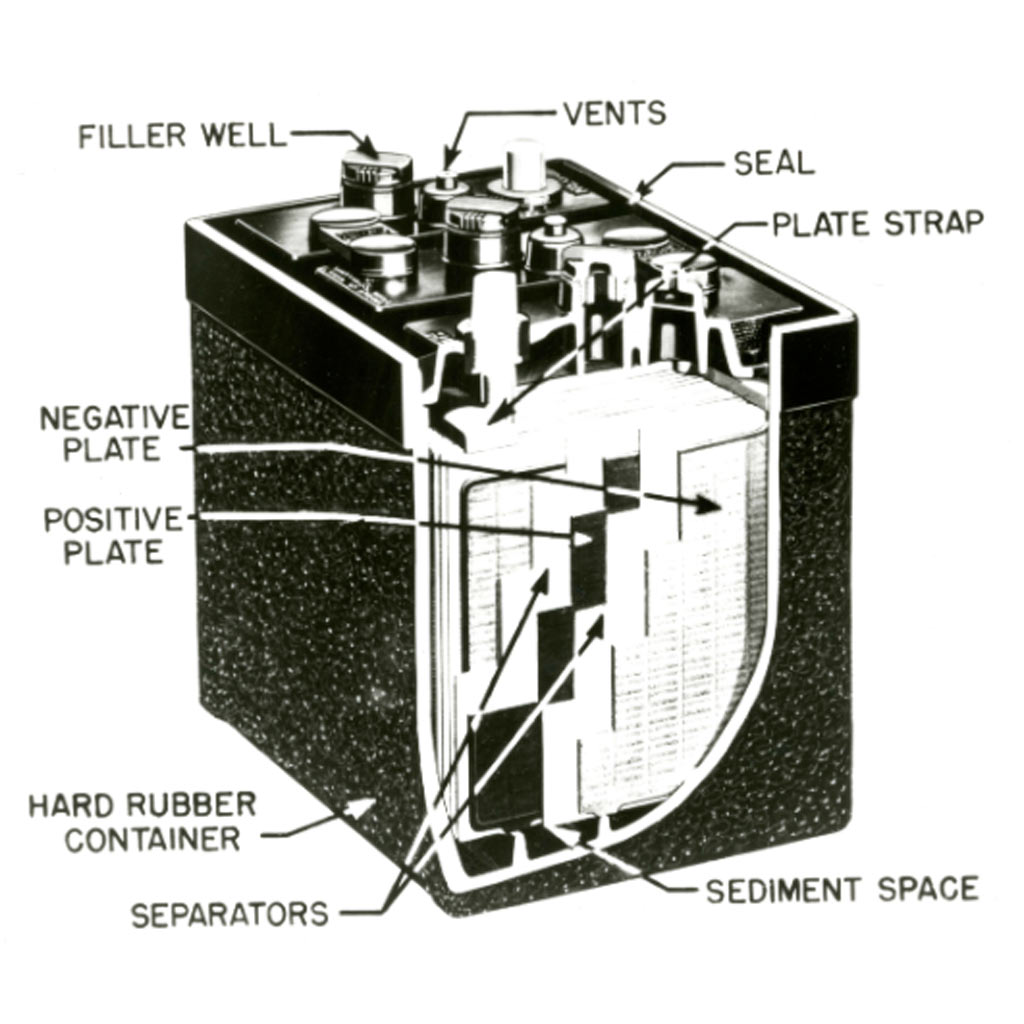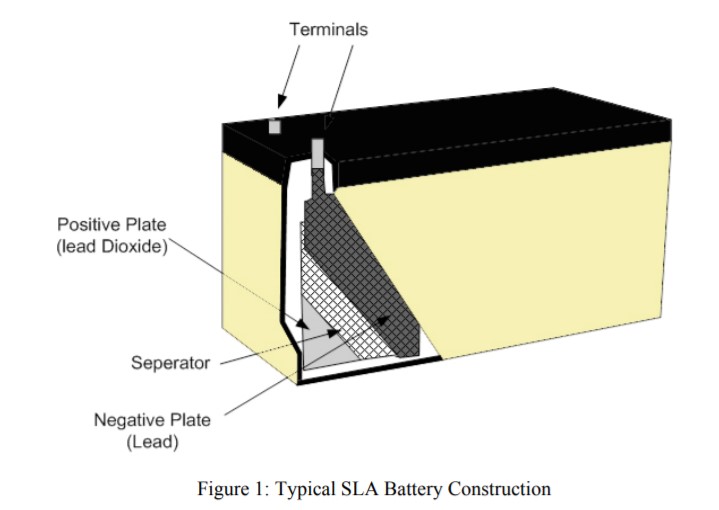Lead acid batteries are among the batteries that are usually used for high power supply. This battery is mainly used in cars. Lead acid batteries have large dimensions and relatively high weight. This type of battery is also used in emergency power sources due to its ability to store high energy.
The lead-acid battery, historically, is the oldest rechargeable battery and has an acceptable current for its weight and volume. Lead-acid batteries are divided into two main groups: wet lead acid and dry lead acid.
Lead acid battery, wet electrolyte
This type of battery was more common in the past and used acid water solution. Its main advantage is its reasonable price, but the defects cannot be ignored. The main disadvantage of this type of battery is the need for constant maintenance and the dangers of using acid. In addition, the emission of toxic gases during charging, exposes humans to respiratory diseases, for this reason, it requires a space with proper ventilation.
In batteries, there are metal plates known as anode and cathode. The electric charge of the anode plate is positive and the cathode is negative. When the battery is being discharged, the electrons move from the cathode to the anode. In other words, they are removed from the cathode and go to the anode. In the case of lead-acid batteries, it should be said that lead oxide is used as a chemical substance. Most of the lead used in lead-acid batteries is on the negative side, but since lead is not malleable, alloys are also added to it.
To create a charge transfer path from the cathode to the anode, the plates must be placed in a liquid called an electrolyte. In the case of lead-acid batteries, this electrolyte is actually a solution of sulfuric acid and water. In this type of battery, there is also a part as a separator. These separators have the role of isolating the positive and negative poles. There are different types of these separators.
The types of lead-acid battery separators from lowest to highest electrical conductivity are:
- PVC separators:
This separator is made of lead and antimony alloys, which is among the weakest in terms of electrical conductivity.
- Cellulose separators
These separators have relative strength for electrical conductivity.
- Polyethylene separators
These separators have good mechanical strength.
And they lead well.
- AGM separators are almost among the best separators.
These separators have a very high effect on the return of oxygen released in reactions to the chemical environment of the battery.
- GEL separator
This separator is also like AGM, except that the electrolyte does not flow as a liquid
And it is in the form of gel and paste.
Sealed acid battery
A type of acid batteries that have a special valve, because these batteries do not need to add water or acid and controlling them due to the internal recombination of gases. The valves of these batteries should not be opened in any way, because they severely cause the loss of the internal gases of the battery, and as a result, the lifespan of the battery will be reduced.
The applications of sealed acid batteries are:
- UPS power supply battery
- Telecommunication equipment battery
- Medical equipment battery
- Electric wheelchair battery
- Electric forklift battery
- Battery for solar systems
- Automatic door control circuit battery
- Elevator steering board battery
- Emergency lighting
- Battery protection systems and closed-circuit television
- Control systems
- Portable equipment
Due to the structure and chemical materials used in sealed acid UPS batteries, there is no problem of gas leakage and acid leakage inside the battery. This is why these batteries do not need to be maintained and visited for service, and this feature is considered one of the advantages of this battery.
But the things that can help you increase the lifespan of UPS batteries include:
- Battery life graph according to the temperature of the environment where the battery is stored.
- The depth of battery discharge and the number of times the UPS battery is charged.
- Battery maintenance and storage conditions
- Battery life graph according to the temperature of the environment where the battery is stored:
The environmental conditions in which the battery is kept have a significant impact on the battery life and its optimal performance. Although a suitable operating range is provided for each battery, but for UPS batteries, the best operating temperature is 20 degrees Celsius. As a result, the further we get away from this ideal temperature, the battery performance and lifespan will decrease. For example, if the temperature reaches 40 degrees Celsius, the optimal lifespan of the battery will be almost halved.
- The depth of battery discharge and the number of times the UPS battery is charged:
First, we need to see what the depth of battery discharge means. The depth of discharge means the discharged percentage of the battery compared to the full capacity of the charged battery. In other words, the depth of discharge indicates the number of times you have charged the battery. The deeper the battery discharge, the more times the battery needs to be recharged and the battery life will decrease.
You need about 8 to 10 hours to charge lead-acid batteries. Remember not to fully charge the sealed lead acid battery because charging 100% will reduce the life of the battery.
As we know, to charge the battery, we must use a higher voltage than the terminal voltage. Therefore, 13 volts can be used to charge a 12.6 volts battery.
Battery maintenance and storage conditions:
Sealed acid UPS batteries can self-discharge, so that if they are not placed in a circuit, they lose all the energy they have stored in them, so if stored for a long period of time, the battery will continue to self-discharge and the life span will remarkably decrease






No Comments